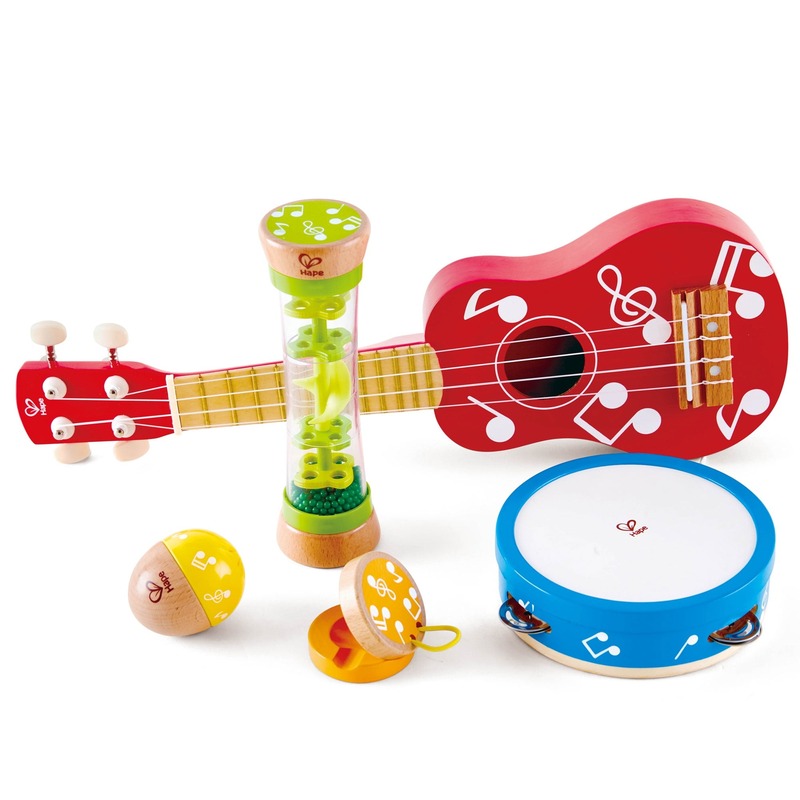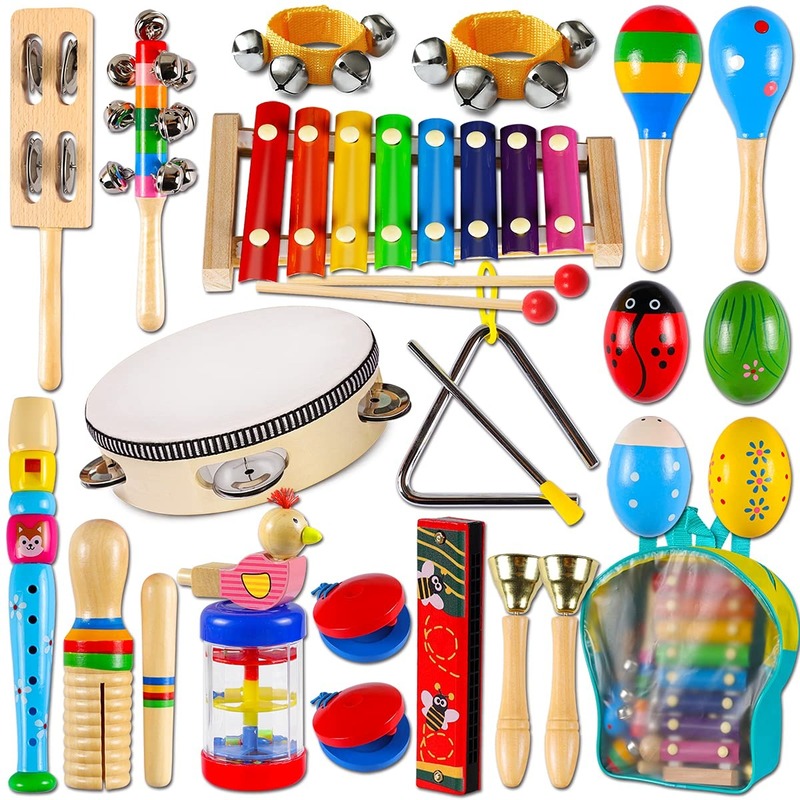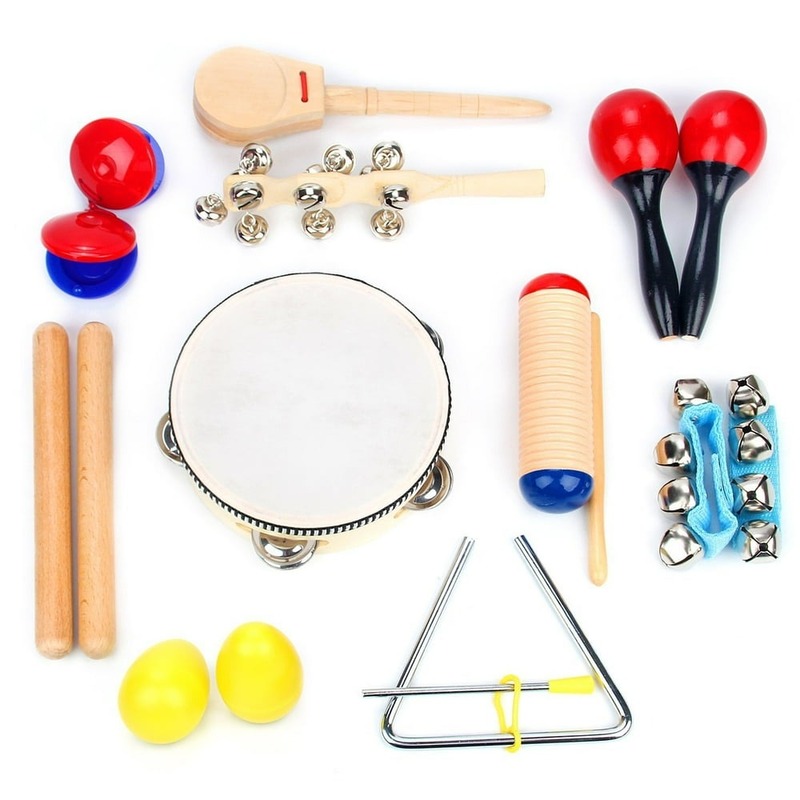The Role of Musical Toys in Child Development
Musical instruments toys play a crucial role in a child’s development. These toys ignite multiple senses, helping children to cultivate an appreciation for rhythm and melody early on. Here’s how musical toys impact child development:
- Enhance Cognitive Skills: Musical toys stimulate brain development. They encourage memory retention, pattern recognition, and problem-solving skills through melody and beat.
- Boost Motor Skills: Playing with musical toys often involves coordination and dexterity. Strumming a toy guitar or hitting toy drum pads aids in refining a child’s fine motor skills.
- Social and Emotional Growth: Music is a universal language that fosters social interaction. Sharing musical toys with peers or parents can develop social skills. The joy of creating music also promotes emotional expression.
- Language Development: Songs and rhythms can make learning new words fun and effective. As children sing along or repeat tunes, they are practicing language and pronunciation.
- Encourage Creativity: Musical toys offer an outlet for imaginative play. Children can create their own songs or imitate their favorite tunes, which nurtures their creative abilities.
Ensure your child gets the most out of their musical instruments toys by choosing appropriate options for their age and introducing these toys early. This will help them to reap the maximum developmental benefits, setting a foundation for lifelong learning and a love for music.

Types of Musical Instrument Toys for Different Ages
Selecting the right musical instruments toys is crucial for age-appropriate development. Different ages require different types of toys to match a child’s developmental stage and motor skills. Here are some suggestions to consider when choosing musical toys:
- Toddlers (1-3 Years): At this age, children are exploring the world around them. Simple toys like shakers, easy-to-hold drums, and toy xylophones are suitable. These instruments help toddlers develop hand-eye coordination and basic rhythm.
- Preschoolers (3-5 Years): Preschoolers have better motor control and can handle more complex toys. Toy pianos, simple string instruments, and percussion sets are great choices. They foster more sophisticated motor skills and early melody recognition.
- School-Age Children (6-9 Years): Children in this age group can understand structured learning and have improved dexterity. Recorders, small guitars, and basic electronic keyboards are ideal. Such toys encourage reading music, discipline, and a deeper understanding of musical concepts.
- Preteens (9-12 Years): Preteens are capable of focusing on more detailed learning. More authentic instrument models, like junior-sized acoustic guitars or beginner violins, are appropriate. These help refine skills and offer a more real-world music experience.
Carefully consider the child’s age to ensure the most beneficial impact and enjoyment from musical instruments toys. Observing a child’s interest and ability can also guide the selection, ensuring a supportive and engaging musical journey.
Benefits of Introducing Musical Toys Early On
Introducing musical instruments toys early in a child’s life brings immense benefits. These benefits span from enhancing neural connections to setting the stage for a lifetime of musical enjoyment. Let’s delve into these advantages:
- Stimulates Early Brain Development: Introducing musical toys to babies and toddlers can help stimulate their brain. These toys encourage early neural development that is critical during the first years of life.
- Builds Foundational Skills: Music helps develop foundational skills such as listening, concentration, and patience. Starting early can make learning these skills more natural and fun for kids.
- Encourages Musical Interest: Early exposure to music fosters a lifelong interest in and appreciation for music. Children who play with musical toys often grow to love music as they age.
- Improves Learning Abilities: Playing with musical toys can enhance a child’s ability to learn. It can improve their memory and make them more open to learning new concepts.
- Enhances Sensory Development: Music is a sensory-rich experience. Playing with musical toys can greatly enhance a child’s sensory development, particularly in hearing and touch.
- Fosters Emotional Regulation: Music has a calming effect on many children. Musical toys can help children learn to regulate their emotions and find comfort in music.
Early introduction to musical instruments toys is not just about creating potential musicians; it’s about comprehensive growth in the formative years of a child’s life. By choosing age-appropriate musical toys, parents and educators can greatly contribute to a child’s development and well-being.
Top Musical Instrument Toys for Kids
Choosing the best musical instruments toys for kids can be a fun adventure. Here are some top picks:
- Toy Drums: A classic favorite. Kids love to bang on drums, creating their own beats.
- Mini Keyboards: These come with various sounds and rhythms, supporting musical exploration.
- Toy Guitars: Whether acoustic or electronic, they spark interest in strumming and rhythm.
- Singing Microphones: Many have built-in music and let children sing along, enhancing language skills.
- Maracas and Shakers: Simple yet engaging, they’re great for learning rhythm and coordination.
- Xylophones: Brightly colored keys guide children in learning scales and melodies.
- Recorders: These introduce kids to wind instruments and basic notes.
Choosing toys that match your child’s age and interests is key. Look for durability, ease of use, and educational value in every toy. Remember, the goal is to make music fun and accessible, paving the way for a lifelong love of music.

How to Choose the Right Musical Instrument Toy
Choosing the right musical instruments toys can be overwhelming. To make it easy, consider a few essential factors. First, match the toy to your child’s age. Infants and toddlers benefit most from simple, easy-to-use instruments. Preschoolers can handle slightly more complex toys, while school-age children and preteens are ready for instruments that offer a more authentic experience.
Look at the educational value of the toy. Does it help with learning about rhythm, melody, or coordination? Also, consider the size of the instrument. It should be comfortable for your child to hold and play.
Check for safety features. The toy should be made of non-toxic materials and have no small parts that could be a choking hazard. Durability is also important. Children can be tough on their possessions, so find toys that can withstand some wear and tear.
Lastly, consider your child’s interests. Some children may prefer the sound of strings, while others are drawn to percussion. Watching your child play can give you clues about what musical toys they will enjoy the most. By following these simple steps, you’ll be able to select a musical instrument toy that will delight your child and support their development.
Integrating Musical Toys with Other Educational Activities
Integrating musical instruments toys with educational activities can enhance a child’s learning experience. Here are ways to blend music with learning:
- Combine Music with Storytelling: Use musical toys to add sound effects to stories. This makes the narrative more engaging and memorable for children.
- Teach Math through Rhythm: Rhythmic patterns in music can help with counting and understanding math concepts. Clapping to beats can make math fun.
- Incorporate Music in Movement: Encourage children to move to the rhythm. This aids in physical development and kinesthetic learning.
- Create a Music and Art Project: Let kids paint or draw while listening to music or playing instruments. This stimulates creativity and sensory skills.
- Use Songs for Teaching: Educational songs can aid memory. Sing about colors, numbers, or the alphabet to help retention.
- Musical Games: Play games like ‘freeze dance’ or ‘musical chairs’. These games integrate social skills with the joy of music.
By considering these activities, parents and educators can create a rich, multi-sensory learning environment with musical instruments toys at the core.
Safety Considerations When Selecting Musical Instrument Toys
Choosing safe musical instruments toys for your children is critical. Safety can’t be compromised when it comes to play items for little ones. Here’s what to keep in mind:
- Check for Age Appropriateness: Ensure the toy is suitable for your child’s age group. This reduces the risk of accidents and choking hazards.
- Inspect for Small Parts: Toys intended for young children should not have small, detachable parts that could be swallowed.
- Look for Non-Toxic Materials: Select toys made with materials that are safe and non-toxic. If the label doesn’t say, don’t buy.
- Quality Over Everything: Durable instruments withstand rough play. They won’t break easily, preventing sharp edges that can cause harm.
- Secure Batteries: If the toy uses batteries, make sure they’re securely enclosed. Kids shouldn’t be able to access them.
- Volume Control: Too-loud sounds can harm young ears. Choose toys with adjustable volume to keep noise at a safe level.
- Rounded Edges: Toys should have smooth, rounded edges to avoid cuts and scrapes.
- Stable and Sturdy: Ensure that the toy won’t tip over or collapse during use.
- Read Reviews and Recalls: Always read product reviews and check for any recalls before making a purchase.
By prioritizing safety, parents can relax knowing their children are not only having fun and learning with their musical toys but doing so in a secure way.

Involving Parents and Siblings in Musical Play
Incorporating parents and siblings into playing with musical instruments toys can create a richer experience for children. Engaging the whole family in musical activities offers additional benefits and enjoyment. Here are several ways to involve the family in musical play:
- Lead by Example: Parents can learn simple songs and play instruments alongside their children. This encourages kids to try new things and makes music a shared activity.
- Family Band: Create a family band where each member plays different musical toys. This teaches children about teamwork and different instruments.
- Music Time Routine: Set aside time for daily or weekly family music sessions. This can become a treasured routine that everyone looks forward to.
- Musical Story Time: Parents can read stories while kids provide the sound effects with their toys. Siblings can take turns inventing musical stories for a creative twist.
- Sing Along Sessions: Have family sing-alongs with familiar tunes. This grows a child’s vocal abilities and memory.
- Encourage Composition: Let children take the lead in composing family songs. This boosts their confidence and creative thinking.
- Express Emotions Through Music: Use musical play to help express feelings. Family members can choose songs that reflect their mood.
When everyone participates, musical play can become a fun and memorable way to bond. By including parents and siblings, kids not only learn about music but also the value of togetherness and communication.




